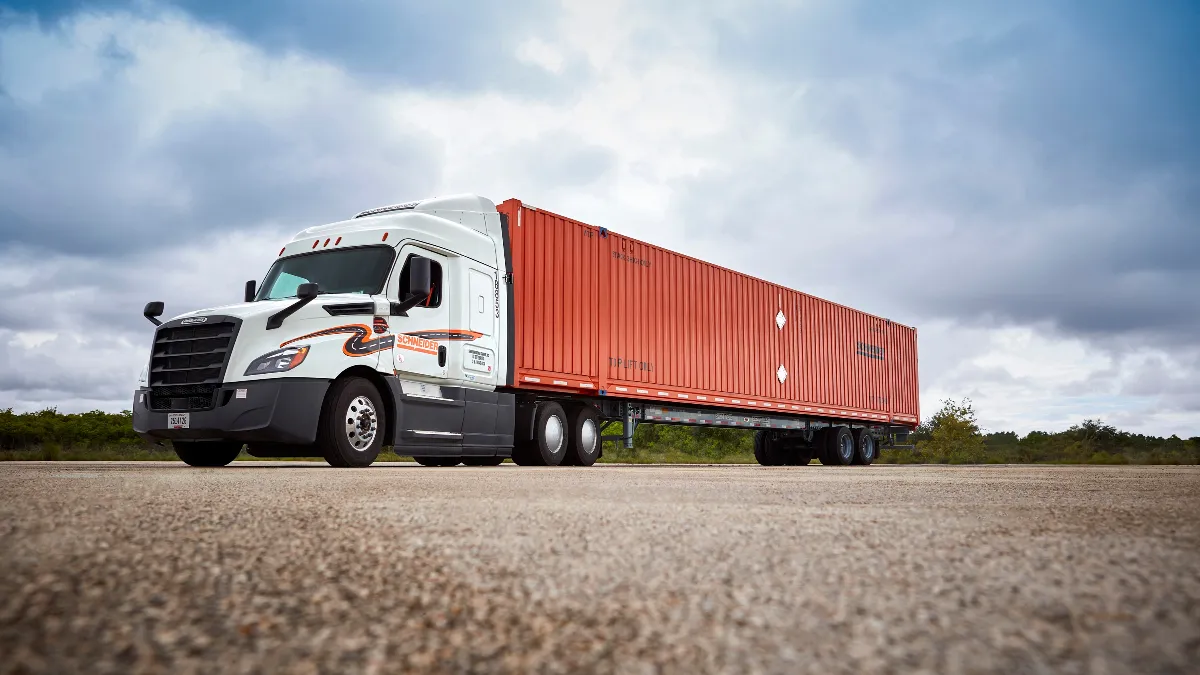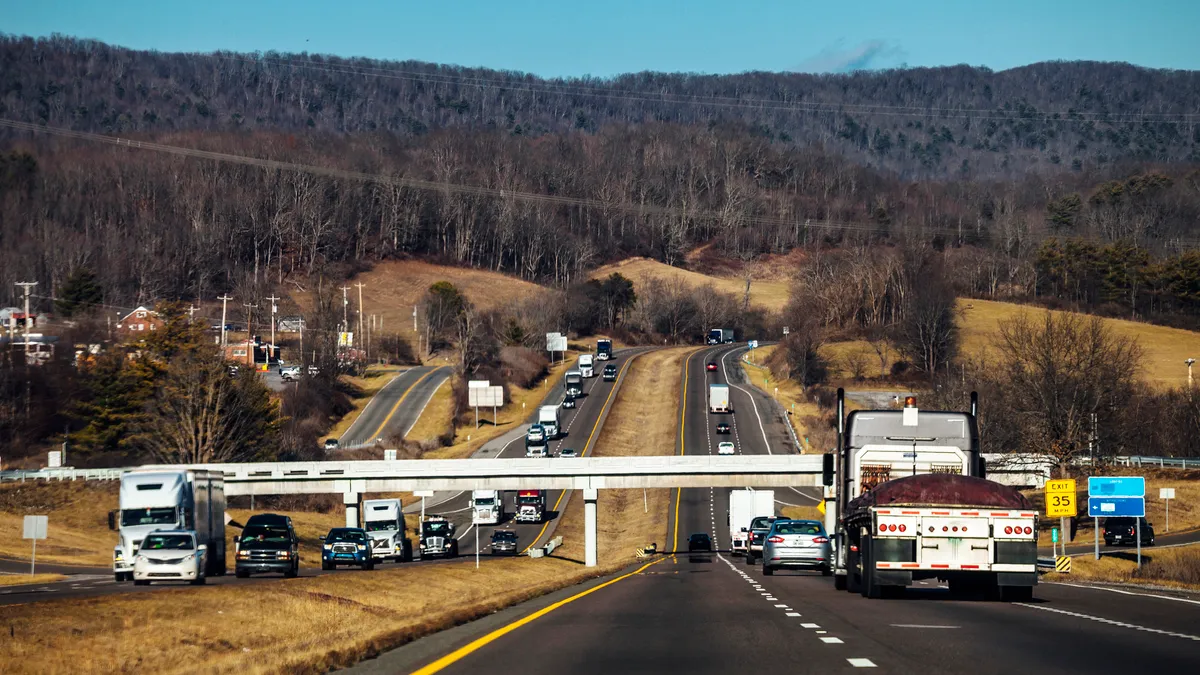Dive Brief:
- The average unload dwell time for Schneider's intermodal customers has increased 70% from the 2019 comparable period, Schneider President and CEO Mark Rourke said on the company's Q2 earnings call last week.
- Schneider aims to add 1,500-3,000 containers by the end of year, but that's dependent on manufacturers' delivery, Rourke said. The containers are built, but the difficulty is getting them to the U.S., he added.
- Freight volumes paired with labor shortages have resulted in ramp congestion in "certain critical parts of the network, at times resulting in volume-limiting rail allocations," Rourke said. And Schneider's drayage fleet is not fully staffed at some high-volume hubs, he said.
Dive Insight:
Intermodal volumes are up across the industry. Rourke said orders improved 5% sequentially from Q1 and 16% YoY. But networks are clogged, and fleets — including J.B. Hunt and Schneider — have levied accessorial charges and instituted other changes to ease the pressure.
Darren Field, executive vice president of J.B. Hunt Intermodal, said on the company's latest earnings call that demand for intermodal services is strong but "significantly outpaces our available capacity which remains constrained by rail performance and restrictions in addition to customer detention of our trailing equipment."
Container fluidity is a big issue on the rail side, Rourke said. Class I railroads BNSF and Union Pacific have made temporary service adjustments to cope with capacity constraints. The former metered traffic between the West Coast and Chicago last month, and the latter suspended service between the same two points.
Rourke called container throughput "frustrating." If customers could turn boxes faster, Schneider would be able to capture more volume. Despite the labor shortage in drayage, Rourke said Schneider is in control of its dray assets more than 90% of the time, which the company considers an advantage.
When asked about Union Pacific's decision, Field said J.B. Hunt doesn't work with Union Pacific, but it is working with BNSF to improve velocity and overall fluidity in the rail system.
"Certainly, if they can be focused on eliminating some of the congestion from international in order to free up capacity for domestic, we would certainly stand to have some benefit from that," Field said on the earnings call.
"Accessorial approaches" have allowed Schneider to be "more judicious" with its assets, Rourke said. "But that still is a limiting factor, if we can't get cooperation from our customer community there."
Intermodal is a major growth area for Schneider. Particularly with the rising importance of environmentally friendlier operations, the company is "very, very bullish on intermodal's growth pattern," Rourke said, adding it intends to double its business over the next eight or nine years.
Part of Schneider's climate goals include doubling its intermodal size by 2030, "reducing carbon emissions by an additional 700 million pounds per year," the company said.












